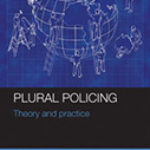Preventing Corruption: Investigation, Enforcement and Governance

Authors: Graham Brooks, David Walsh, Chris Lewis and Hakkyong Kim
Publisher: New York: Palgrave Macmillan, 2013. 232p.
Reviewer: Ainsley D. Elbra | January 2015
This collaborative contribution delivers a wide-ranging and highly relevant discussion of the measurement, investigation and sanctioning of corruption. The authors synthesise the criminology and political science literatures, and the end result is likely to be of interest to a wide range of readers including scholars and practitioners. Furthermore, the inclusion of a series of relevant empirical examples makes this a highly readable volume.
The book’s ambitious remit includes an opening section devoted to defining corruption, presenting tools for measuring graft, and finally, explaining the presence of corruption. The next section discusses legislative solutions to corruption as well as methods by which exposure can be encouraged. The last section of the book is devoted to state crime, and in particular state capture, including the extension of government power through private organisations. The book concludes by considering ways in which corruption can be prevented or reduced.
One of the book’s key strengths is the authors’ willingness to address the common perception that corruption is “out there” and “conducted in some distant cultural and geographical location” (p. 102). Instead, the authors argue, using the Iraq Oil-for-Food programme as an example, that corruption is something often promulgated and exacerbated by Western powers, including governments and firms. The authors demonstrate this by showing that both pro-sanction and anti-sanction groups allowed political realism to trump anti-corruption efforts in Iraq, in turn accommodating graft. This acknowledgement and treatment of corruption, as not something only endemic to developing states, appears throughout the book and informs many of the volume’s conclusions.
The book makes two key theoretical contributions to the existing scholarship on corruption, both of which are worth exploring in this review. Firstly, the authors extend on Rayner et al (2005) and Glazer’s (2002) theories to build a typology of whistleblowers. They then theorise what organisational culture creates the conditions conducive to encouraging whistleblowing.
The second theoretical contribution of this edition is the authors’ claim that state capture deserves its own treatment, as a separate phenomenon to state crime. The authors argue that this is the case because the damage and reach of state capture is widespread, and that it occurs in, and external to, a wide variety of regime types. Here the authors return to their central point that corruption is often committed and encouraged by those outside developing states. Using the oil sectors in Iraq and Africa as case studies, the authors demonstrate that state capture is more than a legal matter. Instead, it has social and economic consequences for the host population, and is something that should be of interest to the criminological scholarship.
The book’s key weakness is its failure to address the ways in which market-led regulation can enhance state power. While it is correct to highlight the ways in which business engages in state capture, there are also numerous examples of private governance initiatives that enhance the regulation of industries. These are particularly evident in the extractives sector. The incorporation of a more balanced argument that demonstrates how firms can both strengthen and weaken government regulation would enhance this volume.
Overall however, this is a highly readable contribution to the criminology and political economy literatures; the book clearly presents the authors’ key arguments in a cohesive and readable fashion. It is commendable for its suitability to both scholars and practitioners alike.
Ainsley D. Elbra, PhD Candidate and Sessional Academic, Department of Government and International Relations, University of Sydney


